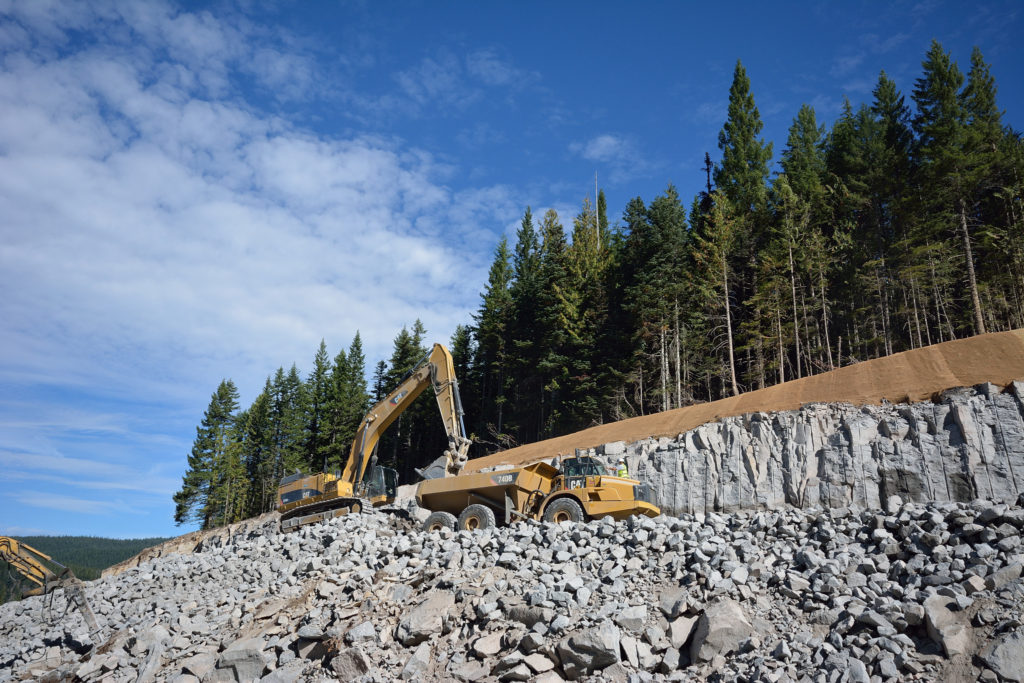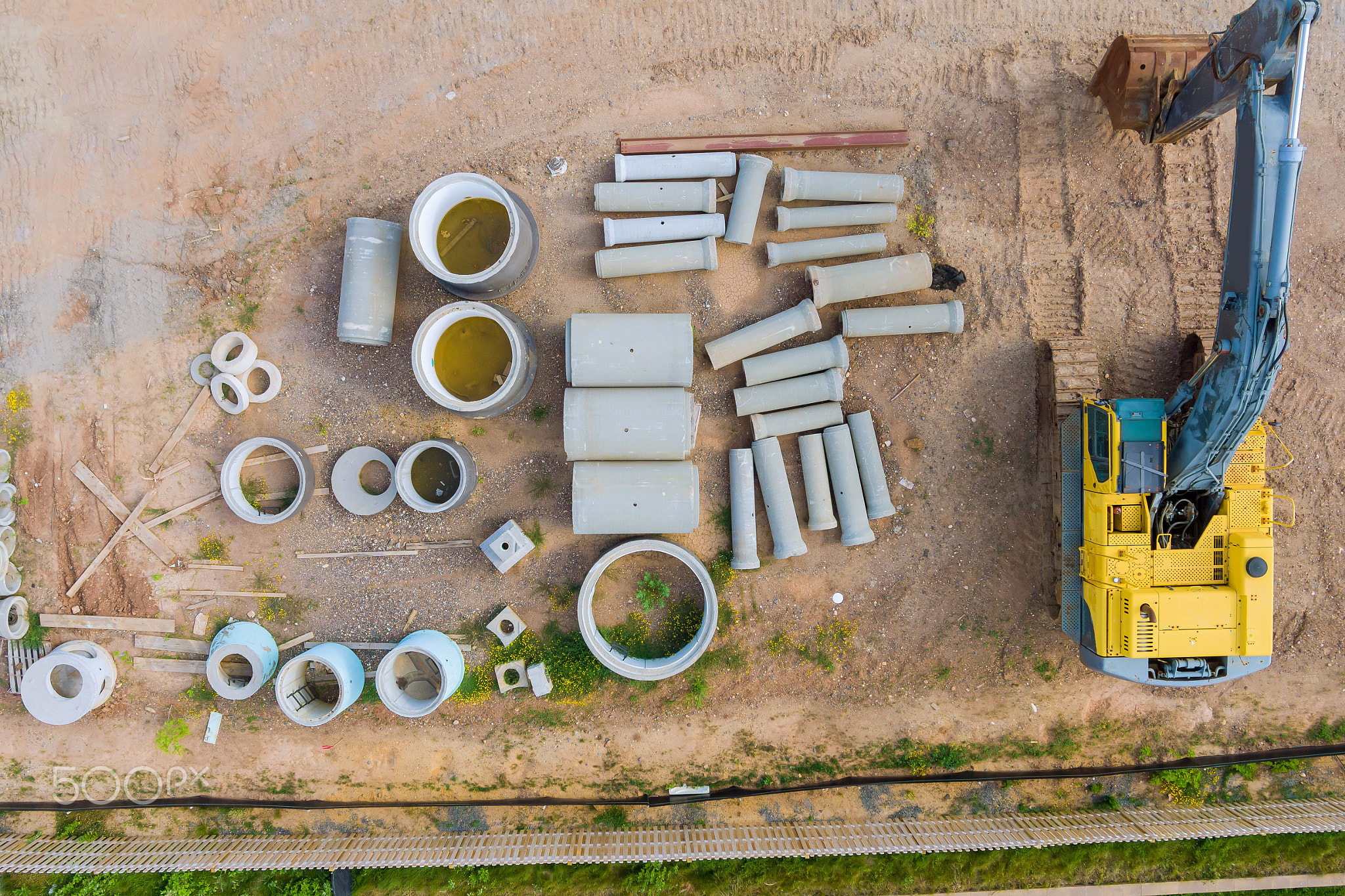Things to Watch for if You Want to Stay SPCC Compliant
Considerations for SWPPP Compliance
The stormwater permit for construction requires the developer or contractor to ensure two things. One, that subcontractors or other outside service providers understand and follow the requirements of the permit and the SWPPP pertaining to the specific project. Two, that the subcontractor follows the stormwater requirements.
Failure of the MS4 to assure compliance by the contractor and failure of the contractor to follow the stormwater requirements of the permit can bring non-compliance actions of fines for the city and/or the contractor, and even cause the construction project to be shut down.
When performing excavation and earthwork, you need to be certain that sediment does not leave the construction site and ensure the perimeter controls, identified on the SWPPP map, are in place on the site such as a silt fence, straw wattle, cutback curbs, etc.
You should refer to the SWPPP map to see where all BMPs are supposed to be. These controls are designed to prevent sediment and pollutants from leaving the construction site. You can ask the project manager or site superintendent for a copy of the map if you need one.
Stockpiles need to have controls if they are going to be on site for more than a couple of days or if weather indicates potential precipitation. It must be placed on previous surfaces and not in the street. Stockpiles that are left in place and are not being used must have a control at the downslope side to contain the stockpile from washing across the site.
To prevent dust, stockpile height must be reduced where possible and should be covered, vegetated, tackified, or sprayed regularly with water.
Dirt ramps should never be used. If necessary, other kinds of ramps should be used, such as silt sifter bags, rubber bags, or asphalt bags. Be sure you do not track dirt out of the construction site onto the streets. Exits from construction sites need to be stabilized. This is often done by using rocks large enough to shake the vehicles so that dirt is not tracked out of the exit. A geotextile should be placed under the rock to prevent the rock from being pushed down into the sediment or mud. Sometimes washing of tires is necessary to assure no tracking from the site. If trackout does occur, then it needs to be swept up as soon as possible, no later than the end of the day.
Slopes need to be stabilized. Whenever a slope is involved there is a potential for erosion from rain or snowmelt. Depending on the degree of slope, and type of soil, you may need to use controls which may include cross tracking with a tractor using straw, seeding, or some kind of erosion control blanket. If slopes don’t need to be disturbed, then leave the vegetation in place or if slopes do need to be disturbed leave the vegetation in place as long as possible. The stormwater permit requires the prevention of erosion on a construction site.
Once storm inlets are installed, approved inlet protection must be installed. Just putting fabric under an inlet grate is not approved. Inlet protection needs to be cleaned and maintained regularly. You should be careful not to damage the inlet protection.
Proper fueling procedures need to be implemented at the construction site. If fuel tanks are at the site then they must be located in secondary containment that is 110% the capacity of the tank. Equipment must be manned at all times during fueling and no topping off of vehicles or equipment to prevent spills. If a mobile fueler is being used then the fueler must be manned during the filling of vehicles and the wheels of the vehicle need to be chocked.
Spill kits are required on all sites at fueling locations. If there is a spill, you must clean it up and properly dispose of it. The site superintendent is the designated person to respond to a spill at the site. Contact the site superintendent as soon as possible after the spill is contained. The spill and documentation of the cleanup must be documented in the SWPPP document. To document the spill and clean up be sure to contact the site superintendent.
It is recommended that vehicles not be washed on site, but if you choose to wash vehicles or equipment on site, be sure you retain the washout waters on the site. These waters can’t be discharged onto another property or into the storm drain system. Also, no soaps or detergents can be used.
It is recommended that all vehicle maintenance occurs off-site at a proper maintenance shop. If maintenance on vehicles or equipment does occur on site, a drip pan needs to be used to contain oils and possible leaks.
All trash and debris from your operations should be cleaned up before you leave the construction site at the end of each workday.
A dumpster or other approved container needs to be on site to contain trash and debris. Trash and debris cannot just be piled up on the site to be hauled off later. Any blowable trash needs to be properly contained on site to prevent it from blowing around or being washed into the storm drain system. Waste bins should be covered at the end of the workday or if there is precipitation.
When dewatering is necessary, never discharge contaminated water into the storm drain system. Check to see if any permits are required in your state. If possible dewater onto your site and not off-site. Care must be taken not to damage any dewatering lines or equipment.
Dust control consists of things such as the use of water trucks; limiting access to the site; slowing the speed of vehicles; minimizing work in high winds; slowing the dumping of materials; preventing tracking; preserving vegetation; covering stockpiles; and the use of wind fences. Where dust is a concern, you should also try to minimize the disturbance of steep slopes.
You should always minimize the disturbance of vegetation to the extent practicable.
One of the categories of BMP controls is to Preserve Topsoil. When developing an excavation and earthwork site, consideration needs to be given to how best to preserve the topsoil. Topsoil holds most of the nutrients needed to grow vegetation, which is also essential to keeping pollutants on the site and not in the storm drains. Topsoil also helps the infiltration of Stormwater which will lower the amount of water leaving the site to carry pollutants into receiving waters.
Whenever possible areas where previous surfaces will exist at the end of the project should be protected from compaction as much as possible. A couple of ways of doing this is to restrict vehicle and equipment access to the area, and/or the use of soil conditioning techniques at the end of work in those areas.
There are specific stabilization requirements in the permit:

- You must have a plan for vegetative and non-vegetative practices.
- You must initiate soil stabilization within 14 days of completion of earth disturbing activities – which includes areas of the site that are no longer active.
- If you are discharging to high-quality water you must stabilize within 7 days of completion of earth disturbing activities. (These are waters that have been determined to require protection and where new discharges of wastewater, treated or otherwise, are prohibited and where a discharge does not degrade the water quality). In addition, if you discharge to impaired water, you must also stabilize within 7 days of completion of earth disturbing activities.
Considerations for Spill Response Control and Countermeasures – SPCC
When the construction site has fuels, oils, and vehicle maintenance fluids on site, there are specific BMPs and regulations that must be followed:
For oil and fuel storage, if there are more than 1320 gallons you must have a Spill Prevention Control and Countermeasures Plan, commonly referred to as an SPCC. The storage also must have secondary containment in the event of a leak or spill.
You must also have adequate spill cleanup equipment on site. Drip Pans should be used to avoid any spills on the ground. In addition, there must be proper disposal and recycling of oils.
Whenever there is a leak or spill it should be cleaned up immediately and properly disposed of.
The area should never be hosed down as this can cause the pollutants to enter the storm drain system.
Building materials stored on site should be organized. When possible the materials should be undercover. If materials are exposed to rain and snowmelt, measures need to be taken to prevent pollution.
Sediment and pollutants need to be kept out of the drainage system while it is being installed. Underground detention/retention or above-ground detention/retention needs to be kept clean of sediment. These systems are generally designed to allow for infiltration. Sediment accumulation will seal these off so that infiltration does not take place.
Above-ground detention/retention ponds need to be stabilized as soon as possible once they are installed to promote infiltration, prevent erosion, and prevent the discharge of sediments.
When solvents and glues are used for utility work they need to be properly used so that they don’t enter the storm drain system. Solvents and glues need to be prevented from being spilled or poured into the storm drain system.
Under stormwater regulations, there will be regular site inspections to identify if there are any problems with the site BMPs. If a problem is identified, it will be noted as an action item that must be remedied within a specified time period, usually 7 days or less.
You should communicate closely with the project manager and site superintendent regarding any concerns with stormwater compliance for the project and be sure you are familiar with the SWPPP map.
Drainage system installation includes post-construction controls. Sediment and pollutants need to be kept out of the drainage system while it is being installed. Underground detention/retention or above-ground detention/retention needs to be kept clean of sediment. These systems are generally designed to allow for infiltration. Sediment accumulation will seal these off so that infiltration does not take place. Above-ground detention/retention ponds need to be stabilized as soon as possible once they are installed to promote infiltration, prevent erosion, and prevent the discharge of sediments.
One of the most common and required controls on the construction site is the concrete, paint, and stucco washouts. The following discharges are prohibited: Stucco, Paint, form release oils, and curing compounds. These can only be washed out and cleaned out with a leak-proof container or leak-proof pit. The washout point must be posted with a sign and the washout container or pit must be cleaned out and properly disposed of when it gets too full and poses the possibility of overrunning. It is generally preferable to separate paint waste, oily waste, and stucco/concrete waste. Oily wastes must be separated from other wastes. When a washout is 75% full it must be cleaned out or changed to make room for future washouts. If a bin is being hauled off then the waters need to be sucked off or contained so they don’t spill during transport. Proper washouts need to be installed for concrete washout trucks and concrete pump trucks.
When working on excavation and earthwork projects there will be certain tasks that will need to be done. In accordance with the SWPPP, we have included each of those tasks with a description of what maintenance is expected for each.
- Cutting Slurry: When conducting concrete cutting the cutting slurry must be contained and cleaned up when the cutting is complete. The cutting slurry must not be allowed to enter the storm drain. Also, the slurry should not be left to dry in the gutter. The slurry needs to be cleaned up and disposed of in the concrete washout.
- Cutting Dust: During concrete cutting, the dust must be controlled. The most common way to control dust is by using water. Following concrete cutting, any dust residue that is leftover must be swept up.
- Tools washing: Washing of tools and applicators needs to be washed off and cleaned in the designated washout area. All wash waters need to be properly contained within the washout.
- Concrete truck washing: The concrete trucks must not be sprayed off in the streets. They should go back to the company batch plant and wash in a designated washing area. (This can be added to the vehicle washing section)
- Forms and form oils: When using forms and form oils the oils must be properly stored within secondary containment. The oils must not be allowed to drip on the ground or if they do drip on the ground they need to be cleaned up.
- On-site Batch Plants: If there is an onsite batch plant then the batch plant needs to be located within containment. The containment needs to be impervious so that if concrete spills it is contained within leak-proof containment. Concrete is not allowed to be spilled or dumped on the dirt.
- Road base: The road base that is delivered to the site must be placed on impervious surfaces, not on a street that is already paved or on existing asphalt
- Asphalt and Oils: Asphalt and oils need to be prevented from entering the storm drain system. Any overflow must be prevented from entering the storm drains.


